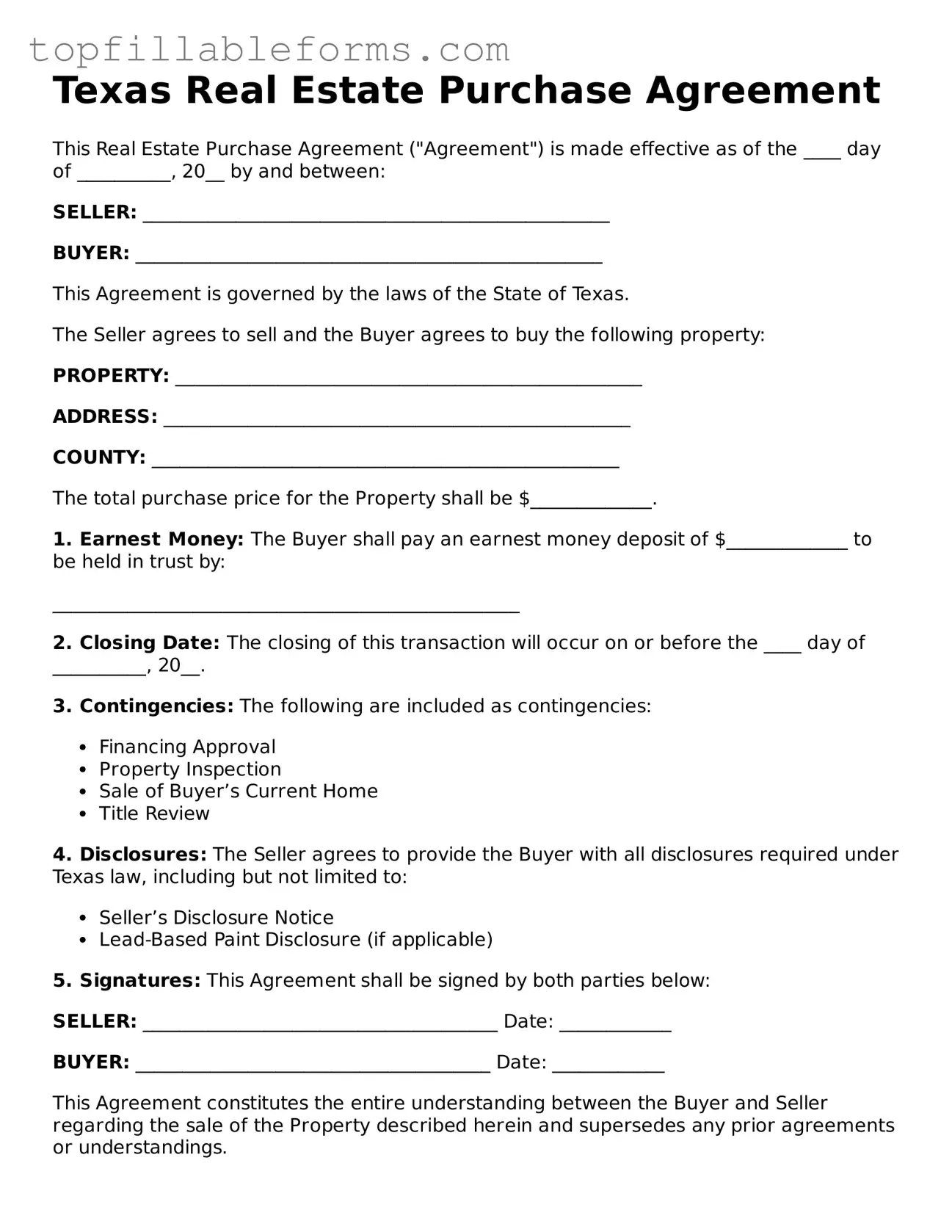Texas Real Estate Purchase Agreement
This Real Estate Purchase Agreement ("Agreement") is made effective as of the ____ day of __________, 20__ by and between:
SELLER: __________________________________________________
BUYER: __________________________________________________
This Agreement is governed by the laws of the State of Texas.
The Seller agrees to sell and the Buyer agrees to buy the following property:
PROPERTY: __________________________________________________
ADDRESS: __________________________________________________
COUNTY: __________________________________________________
The total purchase price for the Property shall be $_____________.
1. Earnest Money: The Buyer shall pay an earnest money deposit of $_____________ to be held in trust by:
__________________________________________________
2. Closing Date: The closing of this transaction will occur on or before the ____ day of __________, 20__.
3. Contingencies: The following are included as contingencies:
- Financing Approval
- Property Inspection
- Sale of Buyer’s Current Home
- Title Review
4. Disclosures: The Seller agrees to provide the Buyer with all disclosures required under Texas law, including but not limited to:
- Seller’s Disclosure Notice
- Lead-Based Paint Disclosure (if applicable)
5. Signatures: This Agreement shall be signed by both parties below:
SELLER: ______________________________________ Date: ____________
BUYER: ______________________________________ Date: ____________
This Agreement constitutes the entire understanding between the Buyer and Seller regarding the sale of the Property described herein and supersedes any prior agreements or understandings.
Both parties acknowledge receipt of a copy of this Agreement.
